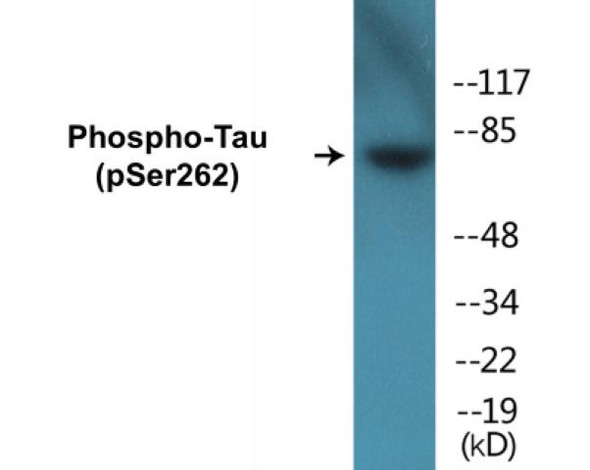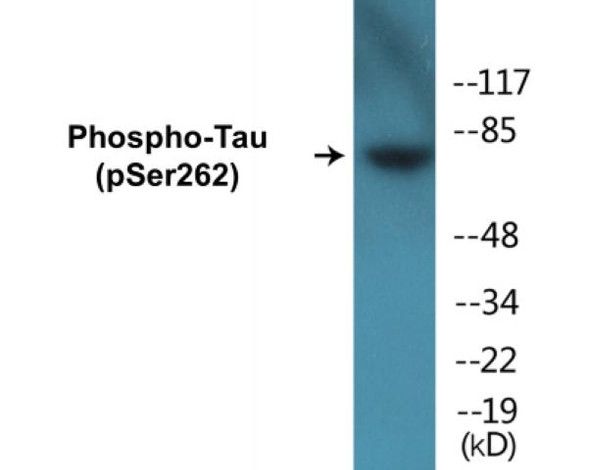Description
GATA4 (Phospho-Ser262)Colorimetric Cell-Based ELISA Kit
The GATA4 Phospho-Ser262 Colorimetric Cell-Based ELISA Kit is specifically designed for the accurate detection of phosphorylated GATA4 at Serine 262 in cell lysates. This kit offers high sensitivity and specificity, providing reliable and reproducible results for researchers studying the molecular mechanisms of gene expression regulation.Phosphorylation of GATA4 at Ser262 is known to play a critical role in cardiac development and function.
Dysregulation of this phosphorylation event can lead to various cardiac diseases, making it a valuable target for therapeutic interventions.With this ELISA kit, researchers can easily quantify the levels of phosphorylated GATA4 in cell samples, allowing for a better understanding of its role in cardiac biology and potential implications for disease treatment.
| Product Name: | GATA4 (Phospho-Ser262) Colorimetric Cell-Based ELISA |
| Product Code: | CBCAB01425 |
| ELISA Type: | Cell-Based |
| Target: | GATA4 (Phospho-Ser262) |
| Reactivity: | Human, Mouse, Rat |
| Dynamic Range: | > 5000 Cells |
| Detection Method: | Colorimetric 450 nm |
| Format: | 2 x 96-Well Microplates |
The GATA4 (Phospho-Ser262) Colorimetric Cell-Based ELISA Kit is a convenient, lysate-free, high throughput and sensitive assay kit that can detect GATA4 protein phosphorylation and expression profile in cells. The kit can be used for measuring the relative amounts of phosphorylated GATA4 in cultured cells as well as screening for the effects that various treatments, inhibitors (ie. siRNA or chemicals), or activators have on GATA4 phosphorylation.
Qualitative determination of GATA4 (Phospho-Ser262) concentration is achieved by an indirect ELISA format. In essence, GATA4 (Phospho-Ser262) is captured by GATA4 (Phospho-Ser262)-specific primary (1ø) antibodies while the HRP-conjugated secondary (2ø) antibodies bind the Fc region of the 1ø antibody. Through this binding, the HRP enzyme conjugated to the 2ø antibody can catalyze a colorimetric reaction upon substrate addition. Due to the qualitative nature of the Cell-Based ELISA, multiple normalization methods are needed:
| 1. | A monoclonal antibody specific for human GAPDH is included to serve as an internal positive control in normalizing the target absorbance values. |
| 2. | Following the colorimetric measurement of HRP activity via substrate addition, the Crystal Violet whole-cell staining method may be used to determine cell density. After staining, the results can be analysed by normalizing the absorbance values to cell amounts, by which the plating difference can be adjusted. |
| Database Information: | Gene ID: 2626, UniProt ID: P43694, OMIM: 600576/607941, Unigene: Hs.243987 |
| Gene Symbol: | GATA4 |
| Sub Type: | Phospho |
| UniProt Protein Function: | GATA4: a conserved and ubiquitous member of the GATA family of zinc-finger transcription factors. Members of this family recognize the GATA motif which is present in the promoters of many genes. This protein is thought to regulate genes involved in embryogenesis and in myocardial differentiation and function. May regulate a set of cardiac-specific genes and play a crucial role in cardiogenesis. Defects are a cause of atrial septal defect 2 (ASD2). ASD2 is an autosomal dominant condition with atrial septal defect and other congenital heart disease but no conduction defects or noncardiac abnormalities. |
| UniProt Protein Details: | Protein type:Motility/polarity/chemotaxis; Transcription factor Chromosomal Location of Human Ortholog: 8p23.1-p22 Cellular Component: nucleoplasm; nucleus Molecular Function:chromatin binding; DNA binding; protein binding; sequence-specific DNA binding; transcription activator binding; transcription coactivator activity; transcription factor activity; transcription factor binding Biological Process: anatomical structure formation; blood coagulation; cell development; cell fate commitment; cell-cell signaling; embryonic foregut morphogenesis; embryonic heart tube anterior/posterior pattern formation; endoderm development; heart looping; male gonad development; positive regulation of angiogenesis; positive regulation of cardioblast differentiation; positive regulation of transcription from RNA polymerase II promoter; positive regulation of transcription, DNA-dependent; regulation of transcription, DNA-dependent; response to drug; transcription from RNA polymerase II promoter Disease: Atrial Septal Defect 2; Atrioventricular Septal Defect 4; Testicular Anomalies With Or Without Congenital Heart Disease; Tetralogy Of Fallot; Ventricular Septal Defect 1 |
| NCBI Summary: | This gene encodes a member of the GATA family of zinc-finger transcription factors. Members of this family recognize the GATA motif which is present in the promoters of many genes. This protein is thought to regulate genes involved in embryogenesis and in myocardial differentiation and function, and is necessary for normal testicular development. Mutations in this gene have been associated with cardiac septal defects. Additionally, alterations in gene expression have been associated with several cancer types. Alternative splicing results in multiple transcript variants. [provided by RefSeq, Apr 2015] |
| UniProt Code: | P43694 |
| NCBI GenInfo Identifier: | 215274105 |
| NCBI Gene ID: | 2626 |
| NCBI Accession: | P43694.2 |
| UniProt Secondary Accession: | P43694,Q3MJ45, Q5IFM8, B7ZKX0, B7ZKZ4, |
| UniProt Related Accession: | P43694 |
| Molecular Weight: | 44,665 Da |
| NCBI Full Name: | Transcription factor GATA-4 |
| NCBI Synonym Full Names: | GATA binding protein 4 |
| NCBI Official Symbol: | GATA4 |
| NCBI Official Synonym Symbols: | TOF; ASD2; VSD1; TACHD |
| NCBI Protein Information: | transcription factor GATA-4 |
| UniProt Protein Name: | Transcription factor GATA-4 |
| UniProt Synonym Protein Names: | GATA-binding factor 4 |
| Protein Family: | GATA transcription factor |
| UniProt Gene Name: | GATA4 |
| UniProt Entry Name: | GATA4_HUMAN |
| Component | Quantity |
| 96-Well Cell Culture Clear-Bottom Microplate | 2 plates |
| 10X TBS | 24 mL |
| Quenching Buffer | 24 mL |
| Blocking Buffer | 50 mL |
| 15X Wash Buffer | 50 mL |
| Primary Antibody Diluent | 12 mL |
| 100x Anti-Phospho Target Antibody | 60 µL |
| 100x Anti-Target Antibody | 60 µL |
| Anti-GAPDH Antibody | 60 µL |
| HRP-Conjugated Anti-Rabbit IgG Antibody | 12 mL |
| HRP-Conjugated Anti-Mouse IgG Antibody | 12 mL |
| SDS Solution | 12 mL |
| Stop Solution | 24 mL |
| Ready-to-Use Substrate | 12 mL |
| Crystal Violet Solution | 12 mL |
| Adhesive Plate Seals | 2 seals |
The following materials and/or equipment are NOT provided in this kit but are necessary to successfully conduct the experiment:
- Microplate reader able to measure absorbance at 450 nm and/or 595 nm for Crystal Violet Cell Staining (Optional)
- Micropipettes with capability of measuring volumes ranging from 1 µL to 1 ml
- 37% formaldehyde (Sigma Cat# F-8775) or formaldehyde from other sources
- Squirt bottle, manifold dispenser, multichannel pipette reservoir or automated microplate washer
- Graph paper or computer software capable of generating or displaying logarithmic functions
- Absorbent papers or vacuum aspirator
- Test tubes or microfuge tubes capable of storing ≥1 ml
- Poly-L-Lysine (Sigma Cat# P4832 for suspension cells)
- Orbital shaker (optional)
- Deionized or sterile water
*Note: Protocols are specific to each batch/lot. For the correct instructions please follow the protocol included in your kit.
| Step | Procedure |
| 1. | Seed 200 µL of 20,000 adherent cells in culture medium in each well of a 96-well plate. The plates included in the kit are sterile and treated for cell culture. For suspension cells and loosely attached cells, coat the plates with 100 µL of 10 µg/ml Poly-L-Lysine (not included) to each well of a 96-well plate for 30 minutes at 37 °C prior to adding cells. |
| 2. | Incubate the cells for overnight at 37 °C, 5% CO2. |
| 3. | Treat the cells as desired. |
| 4. | Remove the cell culture medium and rinse with 200 µL of 1x TBS, twice. |
| 5. | Fix the cells by incubating with 100 µL of Fixing Solution for 20 minutes at room temperature. The 4% formaldehyde is used for adherent cells and 8% formaldehyde is used for suspension cells and loosely attached cells. |
| 6. | Remove the Fixing Solution and wash the plate 3 times with 200 µL 1x Wash Buffer for five minutes each time with gentle shaking on the orbital shaker. The plate can be stored at 4 °C for a week. |
| 7. | Add 100 µL of Quenching Buffer and incubate for 20 minutes at room temperature. |
| 8. | Wash the plate 3 times with 1x Wash Buffer for 5 minutes each time. |
| 9. | Add 200 µL of Blocking Buffer and incubate for 1 hour at room temperature. |
| 10. | Wash 3 times with 200 µL of 1x Wash Buffer for 5 minutes each time. |
| 11. | Add 50 µL of 1x primary antibodies Anti-GATA4 (Phospho-Ser262) Antibody, Anti-GATA4 Antibody and/or Anti-GAPDH Antibody) to the corresponding wells, cover with Parafilm and incubate for 16 hours (overnight) at 4 °C. If the target expression is known to be high, incubate for 2 hours at room temperature. |
| 12. | Wash 3 times with 200 µL of 1x Wash Buffer for 5 minutes each time. |
| 13. | Add 50 µL of 1x secondary antibodies (HRP-Conjugated AntiRabbit IgG Antibody or HRP-Conjugated Anti-Mouse IgG Antibody) to corresponding wells and incubate for 1.5 hours at room temperature. |
| 14. | Wash 3 times with 200 µL of 1x Wash Buffer for 5 minutes each time. |
| 15. | Add 50 µL of Ready-to-Use Substrate to each well and incubate for 30 minutes at room temperature in the dark. |
| 16. | Add 50 µL of Stop Solution to each well and read OD at 450 nm immediately using the microplate reader. |
(Additional Crystal Violet staining may be performed if desired – details of this may be found in the kit technical manual.)






